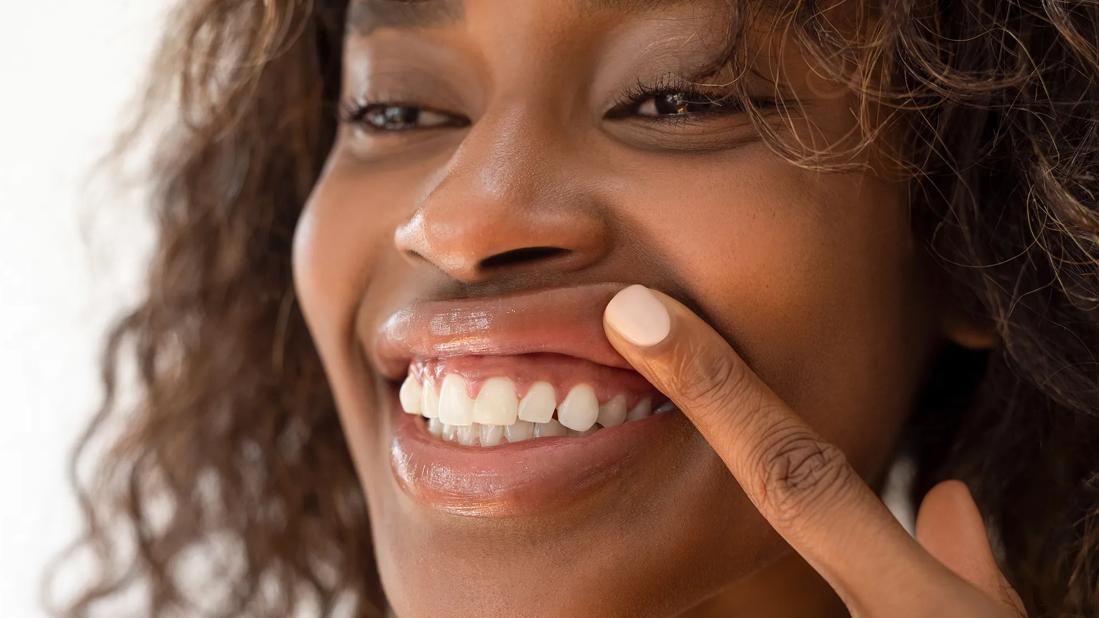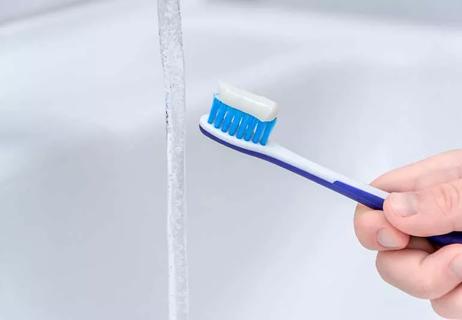Your gums may need a closer look by a dentist if they’re bleeding, feeling extra tender or becoming red

When we think about oral health, most of us focus on keeping our teeth clean and cavity-free. But your gums are just as important. Think of them as the glue that holds your teeth in place. If your gums start to have problems, it can affect your teeth, too.
Advertisement
Cleveland Clinic is a non-profit academic medical center. Advertising on our site helps support our mission. We do not endorse non-Cleveland Clinic products or services. Policy
Healthy gums help protect your teeth, keep your smile bright and even support your overall health. Unhealthy gums can lead to gum disease and tooth loss, as well as issues with your heart.
Dentist Anne Clemons, DMD, talks about why healthy gums matter, how to spot signs of trouble, and what you can do to keep your gums strong and healthy.
If you’re barely aware of your gums on a daily basis, that’s probably a good thing. It’s when you start to notice changes in color, smell and tenderness that there could be a problem.
“The gums are our first protection for everything else and can be a helpful barrier to make sure everything stays healthy,” says Dr. Clemons.
Here are some signs of healthy gums:
Advertisement
Keeping tabs on your gums is something you can do daily. All you need is your bathroom mirror. “There are things that we can see if we’re paying attention,” says Dr. Clemons.
Here are seven questions that can help guide you:
But remember, a self-assessment isn’t a substitute for a professional evaluation. “Dentists can evaluate the tissue in a way that patients and even most other medical providers really can’t,” affirms Dr. Clemons.
“If we’re not staying on top of things by brushing and flossing, that buildup of plaque and tartar sitting around the gums is going to start creating inflammation, which can spread and affect the roots of your teeth pretty quickly,” warns Dr. Clemons.
Use a soft-bristle toothbrush to gently brush your teeth and gums for at least two minutes, twice a day. Brushing removes plaque, which can cause gum disease if left untreated.
“The most important thing is what you’re doing every day at home,” reinforces Dr. Clemons. “Brushing your teeth two times a day for at least two minutes each time is really the first step.”
You saw this one coming. Flossing gets between your teeth where a toothbrush can’t reach. This helps remove plaque and food particles that can irritate your gums and lead to inflammation.
“Flossing should be deliberate and thoughtful,” stresses Dr. Clemons. “A lot of people just go up and down, between the teeth quickly and sometimes, too aggressively.”
But she adds that flossing doesn’t need to take too long — one or two minutes will do the trick.
Advertisement
Dr. Clemmons also warns that there may be some bleeding if you’re getting back into flossing after not doing it for a while (it’s OK, it happens). “If you get back into a flossing routine, you’ll probably notice that at first, your gums are going to bleed as you’re flossing, but with time, usually within a week or so, that bleeding should subside,” she reassures.
A balanced diet with plenty of fruits and vegetables supports gum health.
“All health starts in some way with your diet,” Dr. Clemons says. “It’s important not just to your our overall health, but the health of your gums as well.”
Dr. Clemons recommends a diet that’s rich in:
“All those good essential nutrients are going to improve your overall health and can help suppress any kind of inflammation, too,” she continues.
Unsurprisingly, smoking can harm your gums in many ways. Smoking or using chewing tobacco increases your risk of gum disease.
“Smoking is one of those big things that we know has a strong association with gum disease,” shares Dr. Clemons. “Smoking wreaks havoc all over your body, but it can really set the stage for gum disease and lead to very aggressive gum disease.”
Advertisement
While it can be hard to do, kicking this habit will lead to many improvements in your health, including your gums.
Regular dental check-ups and cleanings are essential for healthy gums. Dentists can spot early signs of gum disease and help you address any problems before they get worse.
“Twice a year usually tends to work well,” Dr. Clemons advises. “But at the bare minimum, you should be seeing a dentist at least once a year for a check-up.”
If you have gum disease, it’s common to visit your dentist or dental hygienist for maintenance cleanings every three to four months. “That can be critical to help prevent the gum disease from worsening,” she adds.
Your gums put in a lot of work when it comes to your oral health. So it’s important to keep them happy and healthy. If you start to notice any symptoms like bleeding, pain or inflammation, or changes in color or texture in your gums, see a dentist right away. And if you’re flossing and brushing regularly, avoiding smoking and maintaining a healthy diet, your gums will thank you for it.
Advertisement
Learn more about our editorial process.
Advertisement

Wisdom teeth can cause headaches when they emerge or if they become impacted

Tooth gems may be safe when your dentist applies them, but there are still risks

Extraction isn’t always necessary, but getting the ‘extra’ teeth out may limit future issues

This oral health practice doesn’t have proven benefits, and it’s not a substitute for brushing and flossing

Phosphorus works with calcium to build strong bones and teeth, plus other important roles

Research points to an association between the health of your gums and cardiovascular disease

A variety of products can be effective at removing stains on teeth

Despite unfounded theories, fluoride has the power to make your teeth stronger

Babies can get congested easily, but you can calm their cough by keeping them hydrated, using nasal drops and running a humidifier

Weight loss may cause loose, sagging skin and muscle loss to your rear

Several conditions, like vitiligo and fungal infection, can cause a loss of pigmentation, leading to white spots or patches on your skin